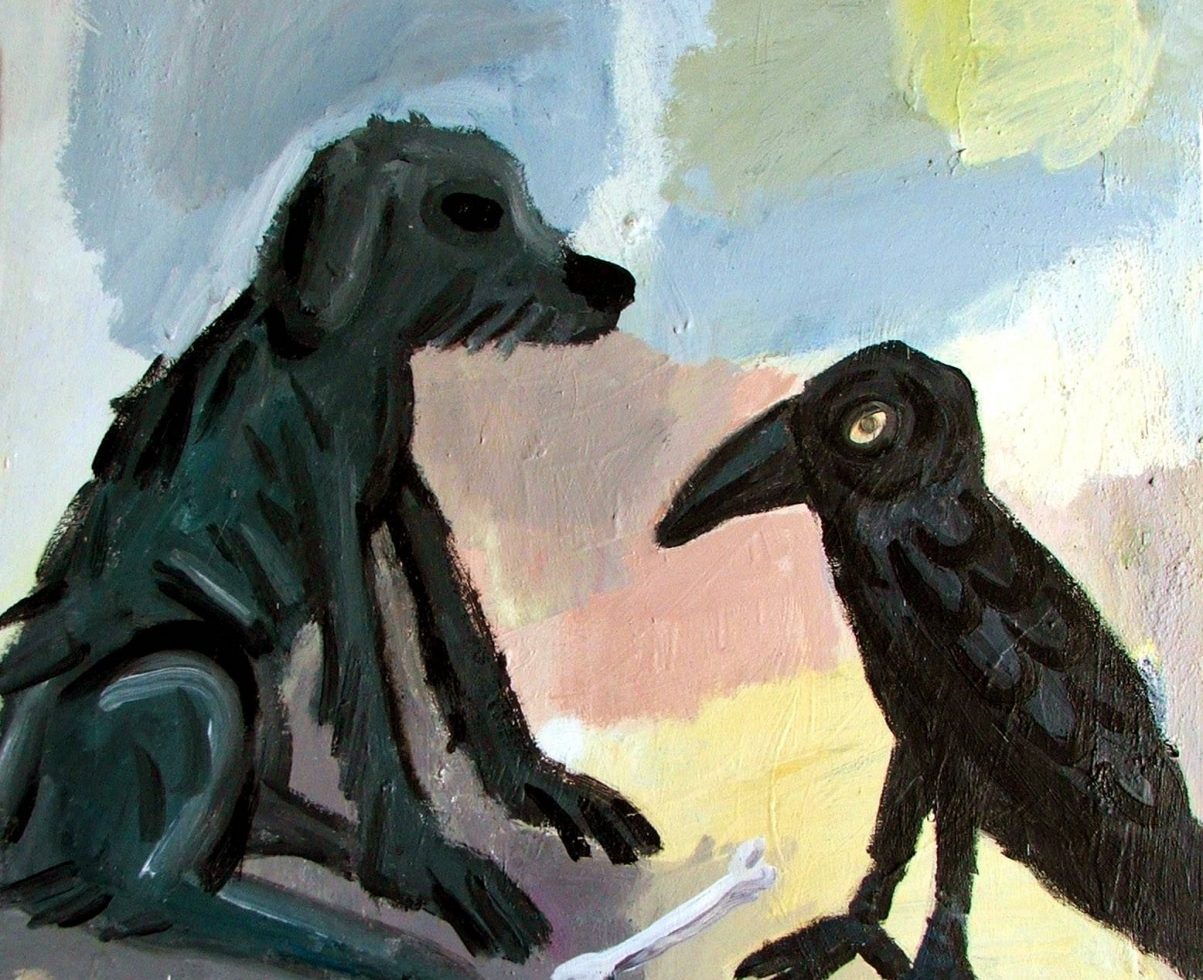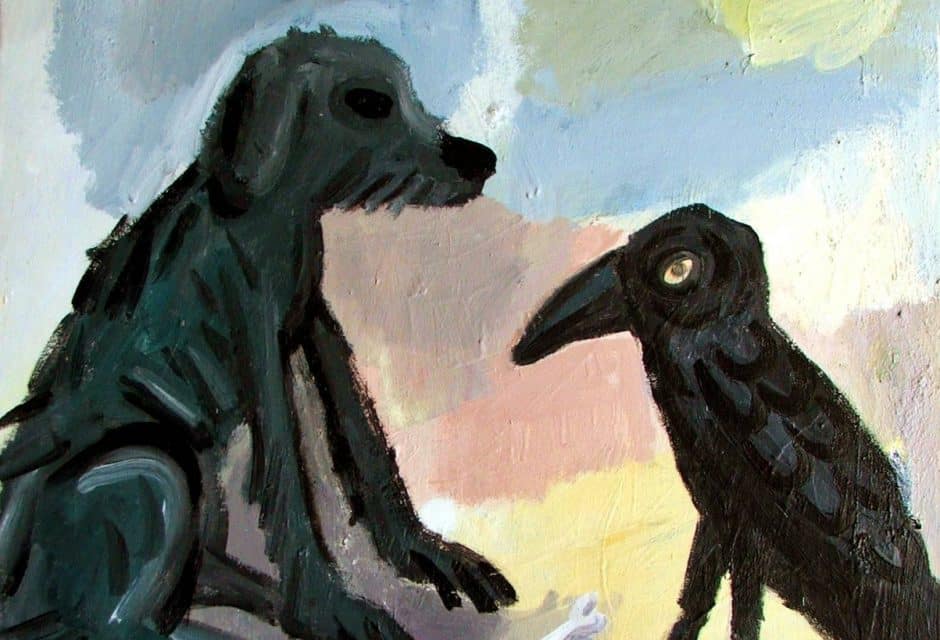

For the Birds
I watched a NOVA special the other night about the intelligence capabilities of dogs versus birds. One segment pitted a raven against a brace of poodles in a race to open a puzzle box, in which had been placed a treat appropriate to the animal. The box consisted of several Lucite boxes, one inside another, that could be removed and opened by manipulation of hinged doors. The researcher would have needed to put a crisp hundred dollar bill in it for me to have opened it in under a minute.
The raven and the poodles were given time to familiarize themselves with the contraption before the test was begun. And then they ran it. The poodles tried their best, but, befuddled by the layers of complexity and the need for fine dexterity, gave up. The raven? It took less than twenty seconds for the bird to open the darn thing and get to the chunk of rat meat inside.
The show went on to discuss brain-to-body mass ratios, and how the brains of ravens and humans were well above the curve, whereas dogs sat right on the curve, suggesting that dogs were not in a raven’s intellectual ballpark.
They should have used my dog Rico in the test. Like Alexander the Great’s solution to the Gordian knot, Rico would have simply smashed the puzzle box to atoms, and gulped down the treat. Take that, Raven.
Seriously, I find the attempt to compare the intellect of species a bit subjective, and silly. It’s really apples and oranges at best. The raven is a master manipulator of its environment, operates largely alone, and can fly. It has to be in constant search mode for food, which involves constant prodding, poking and testing. It has learned to use its beak, feet, dexterity and mobility to make its living. The dog? Can’t fly, can’t use it’s mouth as expertly as a raven, doesn’t have expert vision, and is twenty times the size, making finer tasks more difficult. A dog just isn’t as experienced in the art of foraging as is the raven.
The ability for ravens and crows to use tools to obtain food is scary smart, though. A stick held in a beak makes a great probe for insects. A stale French fry dropped into a rain puddle for a minute to rehydrate. A claw and a beak used to reel in a rope with a bird feeder hanging beneath it. Scary bird smarts.
But what of dogs? Let’s put the raven in the canine court. Can you teach a raven to herd sheep? Track down a lost child in the woods? Find a bomb? Sense an epileptic fit before it happens? Develop a vocabulary of a thousand words? Cross the country to find its lost family? Distinguish one object from a dozen others? Run a complex maze to find its owner at the other end? Become housetrained at the age of four months? Drag a child out of a burning house?
Besides being subjective, I guess I’m saying that intellect is augmented (or even produced by) the subject animal’s sensory capabilities. How does the raven’s superior vision help it achieve some complex task? How does the dog’s superior sense of smell allow it to trump the raven in tracking or object discrimination?
Intelligence for me also must include a social component. And though birds can be quite social, they can’t compare to dogs in this respect. Canids have relied on social interaction for millions of years to make their living. A desire to work with a group, protect a group, think out hunting strategy- it’s all a sign of cleverness, and of a collective intellect. This element was not tested by the NOVA researchers. The dog’s unflinching loyalty to the group could easily cause a researcher’s results to show superior intellect, even if it isn’t the case.
I love watching birds figure things out. It’s a bit spooky I guess, to think of them as smarter and craftier than once given credit for, but fun nonetheless. But if given the choice, I’d rather hang out with the poodle.
Join the newsletter and never miss out on dog content again!
"*" indicates required fields
By clicking the arrow, you agree to our web Terms of Use and Privacy & Cookie Policy. Easy unsubscribe links are provided in every email.